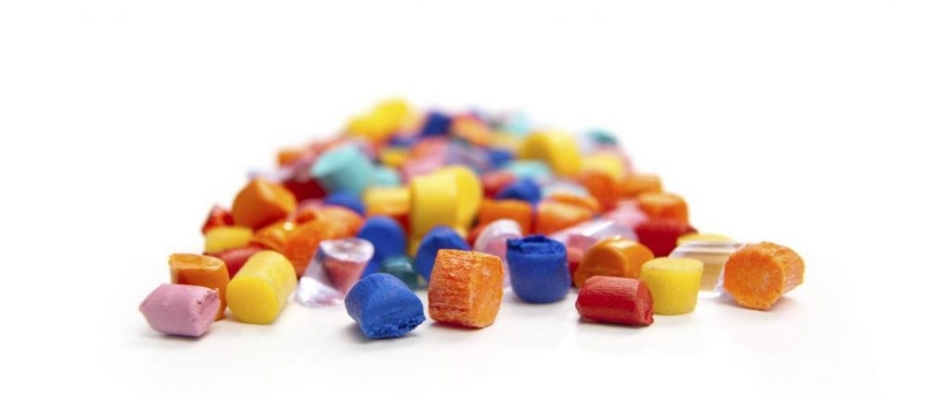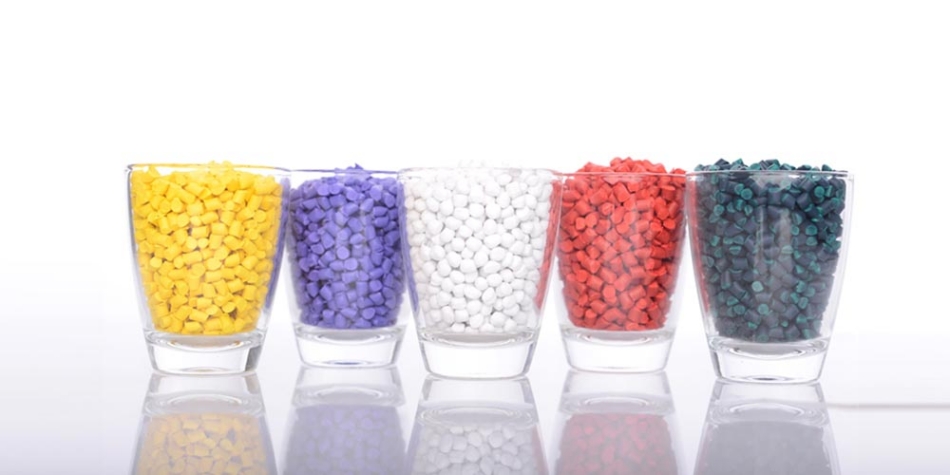Color masterbatches also called color concentrates for plastics, are plastic granules that are mainly used for coloring plastics. Color masterbatch is made up of 2 main components: the colorants and the polymer-specific carrier resin. Some special formula also contains processing additives such as zinc, oil, wax, etc., and/or fillers (usually calcium carbonate powders). This type of masterbatch is widely used every day in nearly every aspect of life with a broad range of applications, but have you ever considered how manufacturers made them? This article brings this knowledge to you.
Read more: What is color masterbatch and how was masterbatch produced?

Color masterbatch
1. What does color masterbatch contain?
There are some misconceptions in the plastic industry that we truly want to clarify before explaining deeper what this type of masterbatch is made from. First, the color masterbatch is not pure pigment/colorant. Contradictorily, pure pigment/colorant or any type of dyeing agent is just a part of masterbatch, which also contains carrier resins, so it is less concentrated than the original colorants, which are commonly divided into 3 sub-groups: organic dyes, organic pigments, and inorganic pigments. Regarding black and white masterbatch – the most used color concentrates for plastics, their dramatic color usually comes from carbon black (P or HAF) and TiO2 (rutile/anatas), respectively.
2. What are the main purposes and benefits of using color masterbatch?
Color emphasizes the highlight of design and delights the eyes. No one can deny the vital role of colors in our life. That’s why humans try to modify most commercial products’ appearances in terms of providing more choices of colors. In the plastic world, color masterbatch was created to serve this purpose – bringing vibrant and dramatic color to plastic products and their applications. Several benefits that our products can offer include ease to use, high color concentration, good color quality, stable color shade, excellent color dispersion ability, good light fastness, and heat resistance, saving cost (of pigment drain), and processing time (easy to directly mixing when processing), no influence on the environment. Color masterbatch is now applied in various industries and businesses with multiple appliances from textiles, automotive, packaging, construction, electronics and electrical, etc.
3. Differences between color masterbatch and colored resins
Color masterbatch slightly differs from colored resins although they both contain the same major ingredients. While color masterbatch may contain 20 - 75% colorants (the actual dyeing agents, which could be powder or liquid pigment), the colored resins used for plastic products manufacturing only contain a significantly lesser amount of these colorants. The proportion of color concentrations in final products usually falls in the range between 2 to 10%. This is also the recommended usage dose that most masterbatch manufacturers (including EuP) suggest for their customers.

Differences between color masterbatch and colored resins
4. Which properties that high-quality color masterbatch should have?
In order to export to the global market, color concentrates for plastics must meet several requirements such as the granule’s size needs to be even (approximately 3mm). They also should have stable quality with good color dispersion. Masterbatch which contains high-quality ingredients with 100% virgin resin will be able to help the end products achieve a smooth surface with good printability and durability. Here at EuP, we provide our customers with 2 production lines for White masterbatch, 7 production lines for Black masterbatch, and multiple production lines for color masterbatch and additive masterbatch.
5. EuP – the world-class manufacturer providing color masterbatch with the best quality
Depends on the desired color (and
even special effects), each type of color
masterbatch is produced by a special formula under a strictly controlled
process. At our company, based on each customer’s demands and going through a
serious consideration various factors including viscosity, melting temperature,
environmental conditions, chemical resistance, FDA suitability, etc., a
specific recipe is developed to ensure our products will satisfy any
requirement, even the hardest one. The colors range using for EuroPlas
masterbatch is based on various coloring systems (RAL and PANTONE) in which
each of them provides the unique effects, properties and benefits.

EuP – the world-class manufacturer providing color masterbatch with the best quality